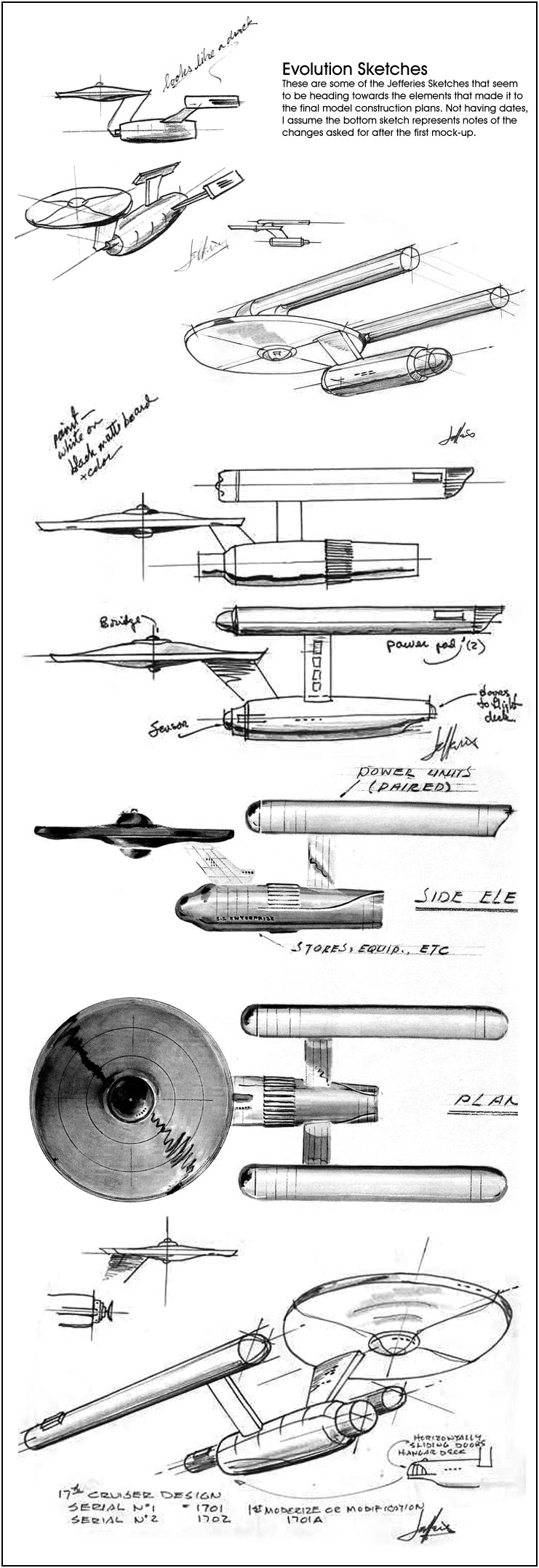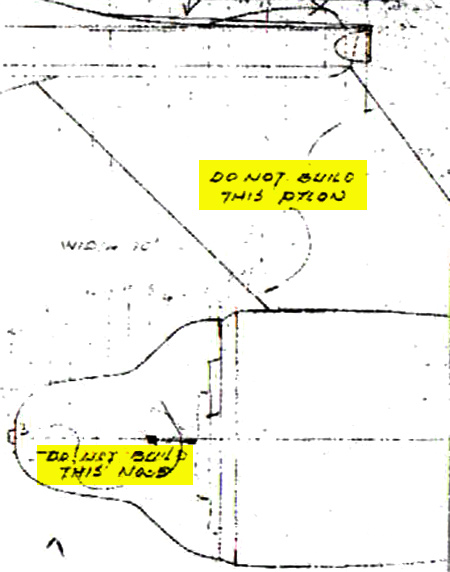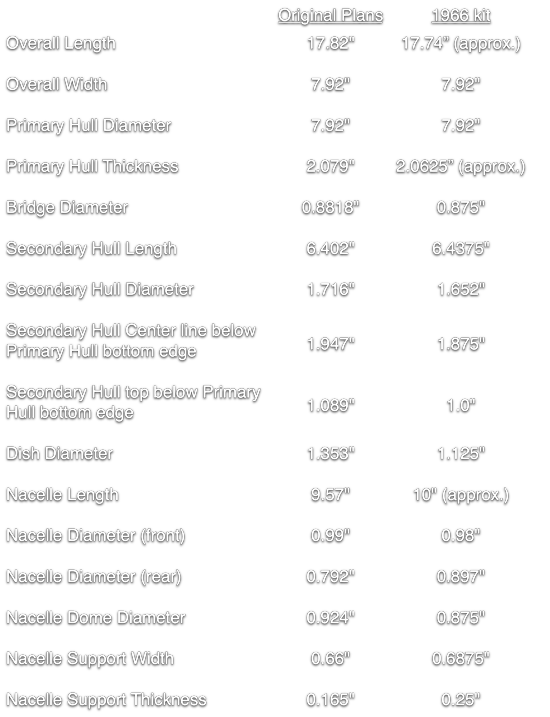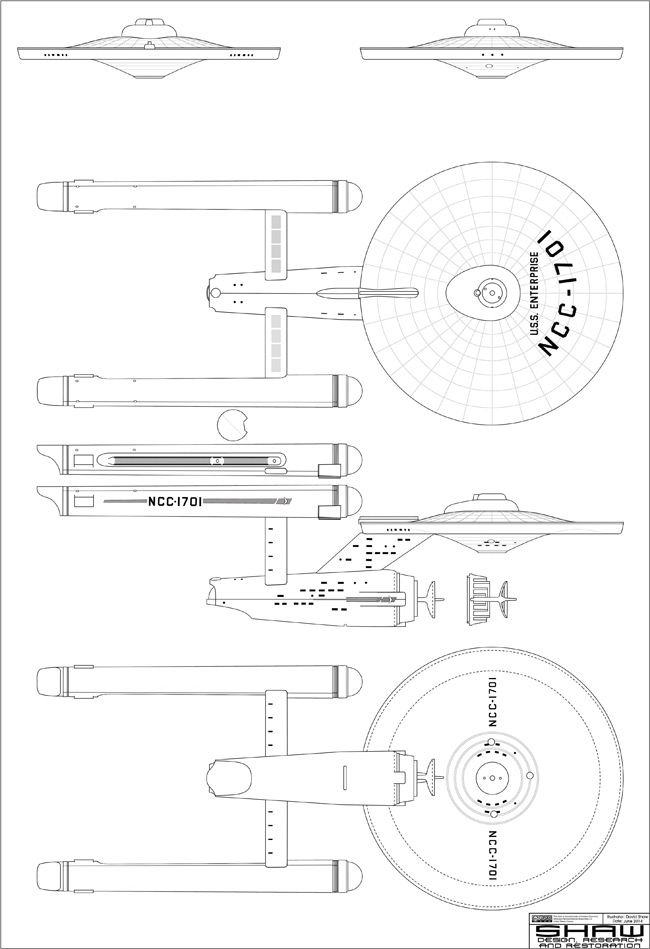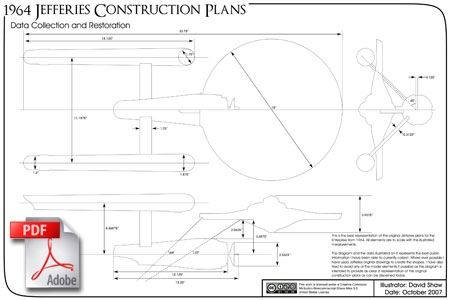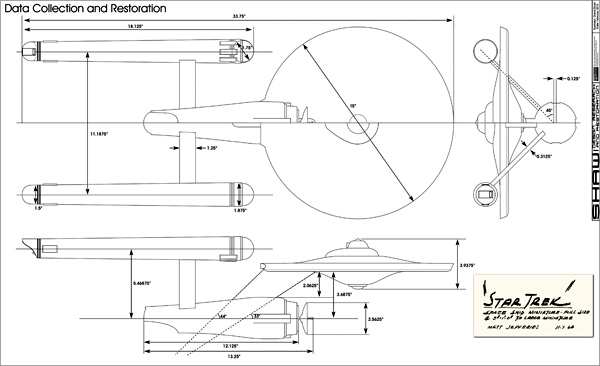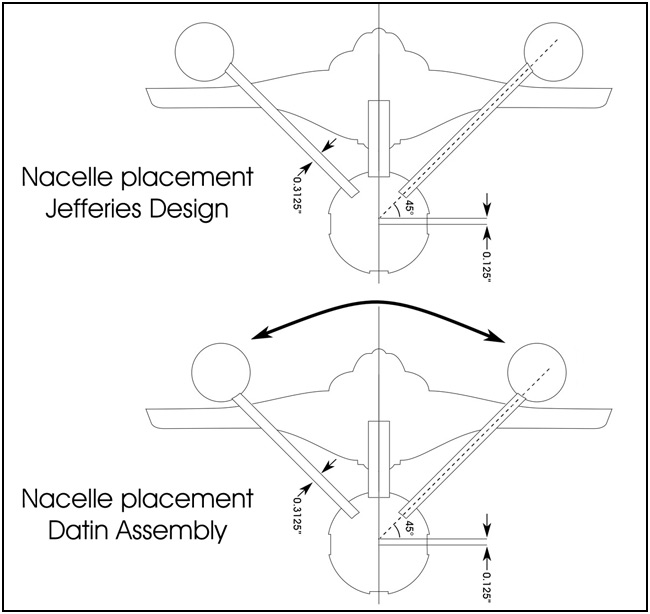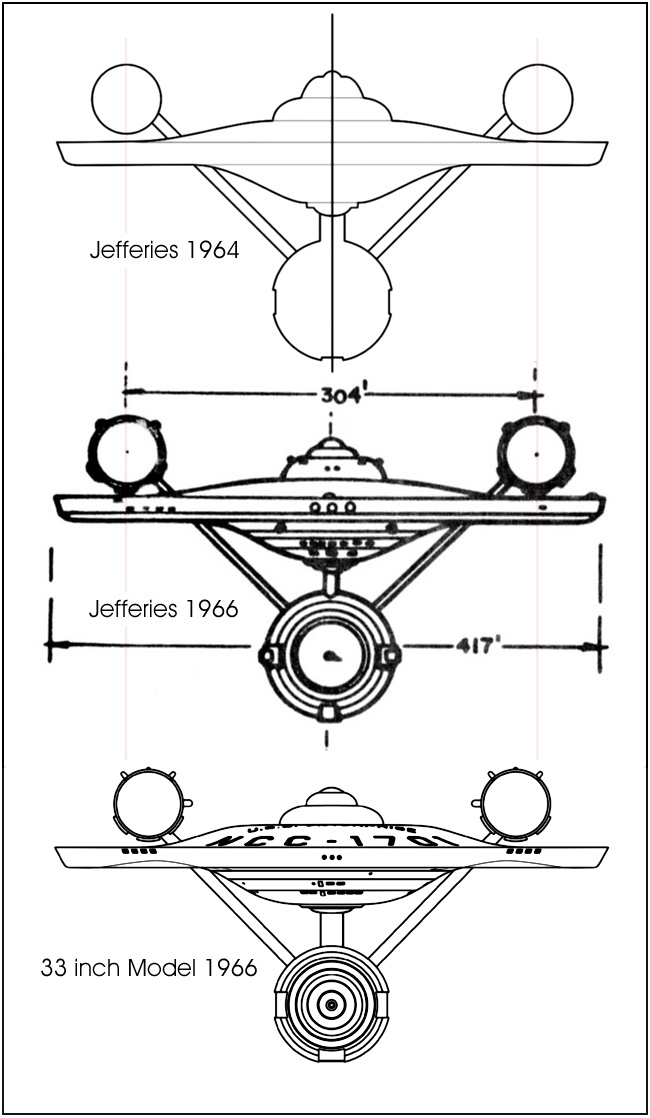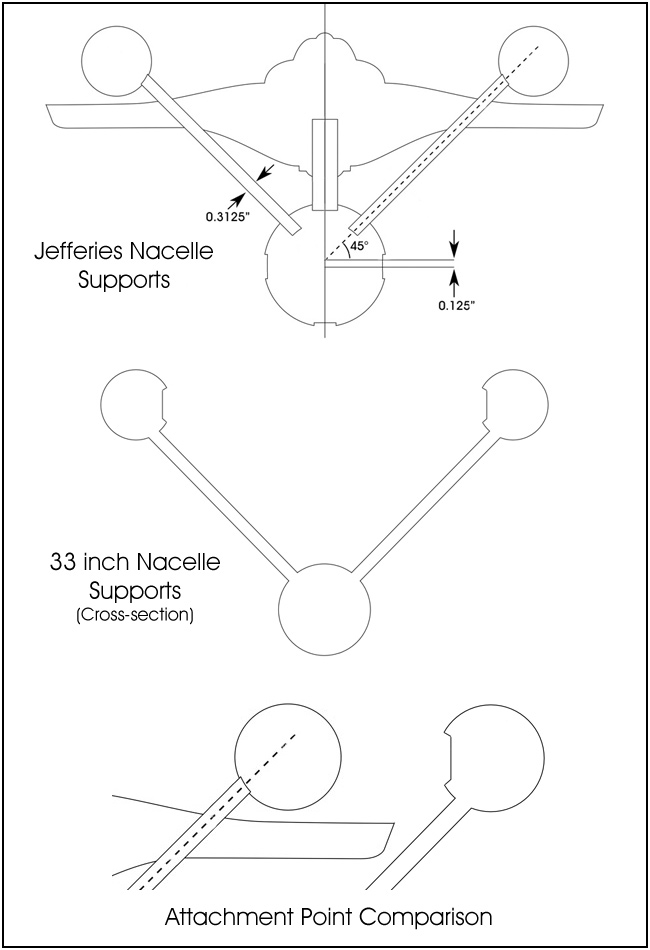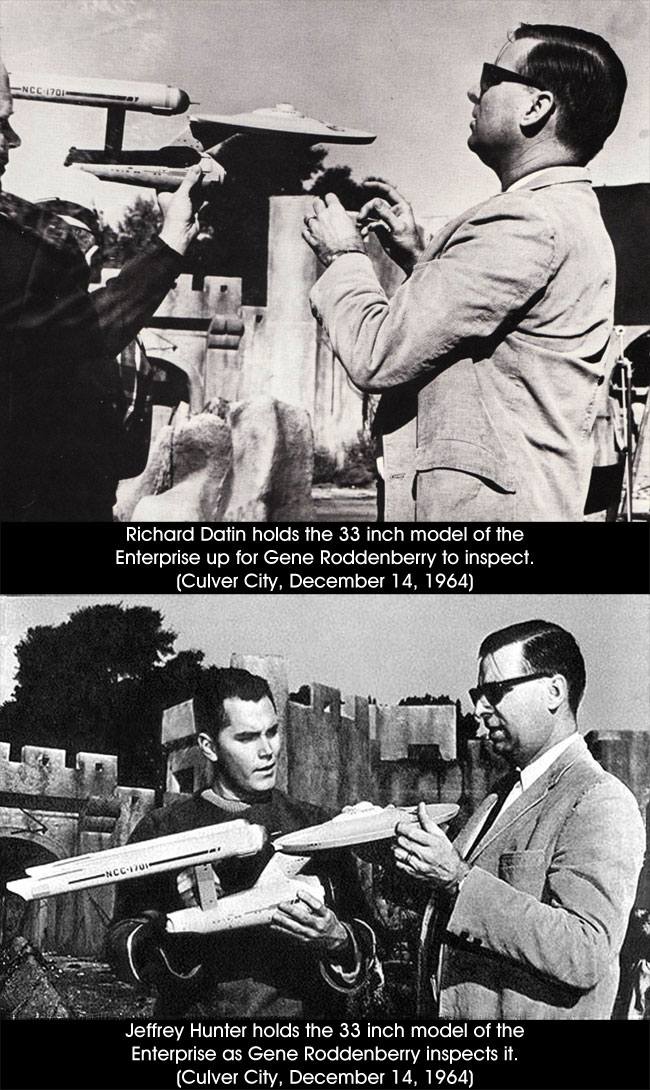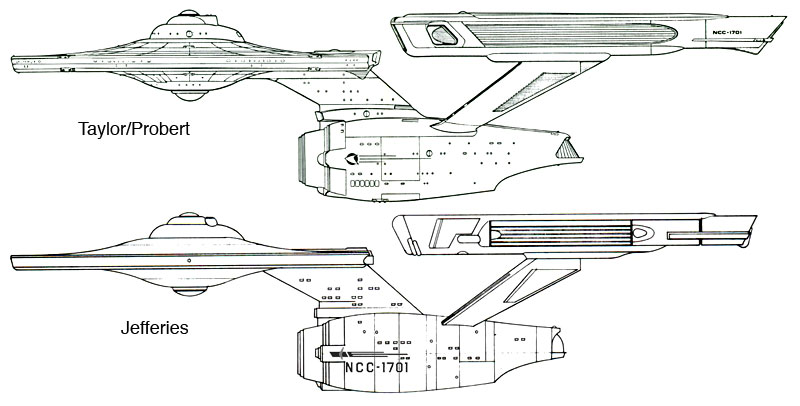MJ designed the TOS E--established fact.
But I have some question marks in the back of my mind for quite sometime.
How much of the E did he design?
I ask this only because we have never seen construction drawings of the 11 footer. We have seen numerous sketches and illustrations as MJ worked towards a viable concept. We have seen the familiar three-view orthographic drawing reprinted in TMoST, on posters and the side of the boxof the old AMT 18 in. model kit. And that drawing differs in many details from the 11 footer as built.
What was Pato Guzman's contribution to the design process? (Guzman was involved early on during "The Cage's" development I believe). And Richard Datin built or oversaw the building of the 11 footer (and maybe the 22 incher as well, but I'm not sure). But how much of his work was simply following construction drawings and how much (if any) did he possibly detail himself to flnalize the design?
Design is rarely a solo effort. Even constructive criticism is a contribution of sorts (and assuming the criticism is heeded and leads to improvement).
We know that AMT (with Thomas Kellogg and Gene Whitfield) designed and built the Galileo mockups and miniature with MJ's input. So MJ gave input but didn't actually design the shuttlecraft himself (although some of his sketches might have influenced Kellogg and Whitfield).
So the essential question is: is the design of the TOS E all MJ or did others contribute to finalizing it? How much of the revisions to the 11 footer as it was modified from 1st pilot to 2nd pilot to series production version did MJ oversee?
Maybe these questions can't even be answered.
This sounds like a question for Shaw but others' feedback is certainly welcome.
But I have some question marks in the back of my mind for quite sometime.
How much of the E did he design?
I ask this only because we have never seen construction drawings of the 11 footer. We have seen numerous sketches and illustrations as MJ worked towards a viable concept. We have seen the familiar three-view orthographic drawing reprinted in TMoST, on posters and the side of the boxof the old AMT 18 in. model kit. And that drawing differs in many details from the 11 footer as built.
What was Pato Guzman's contribution to the design process? (Guzman was involved early on during "The Cage's" development I believe). And Richard Datin built or oversaw the building of the 11 footer (and maybe the 22 incher as well, but I'm not sure). But how much of his work was simply following construction drawings and how much (if any) did he possibly detail himself to flnalize the design?
Design is rarely a solo effort. Even constructive criticism is a contribution of sorts (and assuming the criticism is heeded and leads to improvement).
We know that AMT (with Thomas Kellogg and Gene Whitfield) designed and built the Galileo mockups and miniature with MJ's input. So MJ gave input but didn't actually design the shuttlecraft himself (although some of his sketches might have influenced Kellogg and Whitfield).
So the essential question is: is the design of the TOS E all MJ or did others contribute to finalizing it? How much of the revisions to the 11 footer as it was modified from 1st pilot to 2nd pilot to series production version did MJ oversee?
Maybe these questions can't even be answered.
This sounds like a question for Shaw but others' feedback is certainly welcome.

